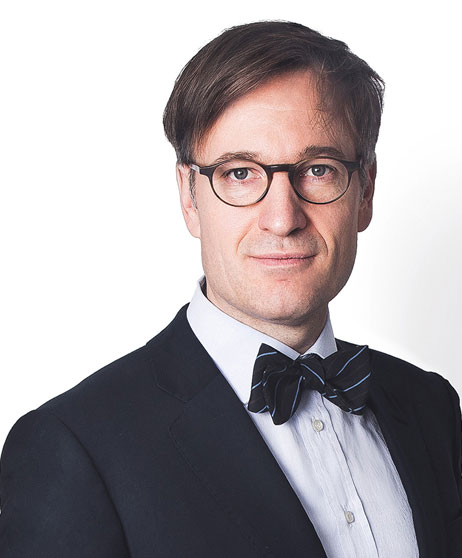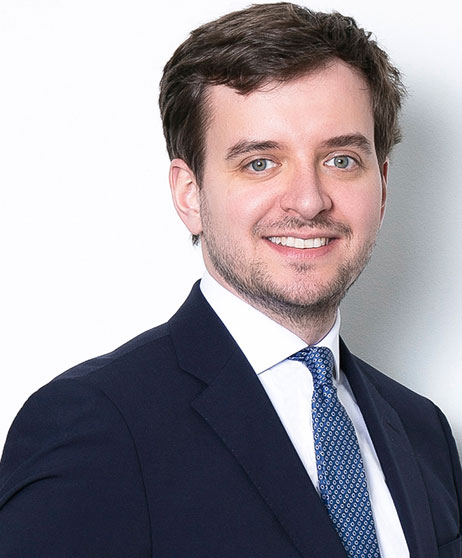Germany: Audi Finds Success and Tech Applications on the Rise amid Case Law Updates on the Scope of Preliminary Injunctions

This is an Insight article, written by a selected partner as part of WTR's co-published content. Read more on Insight
In summary
This article focuses on the latest developments in German trademark law and provides an overview on obtaining preliminary injunctions in Germany.
Discussion points
- Latest case law developments on preliminary injunctions and scope of injunctions
- Coverage of new technologies in German trademark filings
- New case law concerning trademarks in the automotive sector
Referenced in this article
- Law on Amendments of German Trademark Law of 1 May 2020
- Decision of Federal Court of Justice on burden of proof in cancellation procedures of 14 January 2021, I ZR 40/20
- S 6 v S 8, Decision of Munich Regional Court of 19 January 2023; 1 HK O 13543/21
Injunctions at glance
| Preliminary injunctions – are they available, how can they be obtained? | Preliminary injunctions are available. The rights holder needs to file a written application with a competent German civil court within a short period of time after becoming aware of the relevant infringement. The court can reject the application, order an oral hearing or grant the injunction without oral hearing, ex parte. |
| Permanent injunctions – are they available, how can they be obtained? | Permanent injunctions are available. The rights holder needs to file a written application with a competent German civil court. The court will usually ask the defendant to file a defense writ. Afterwards the court will usually order an oral hearing. |
| Is payment of a security/deposit necessary to secure an injunction? | Generally not. Only under rare circumstances may the competent court ask the right holder to pay a security deposit for the enforcement of the injunction (not its grant). Additionally, and also only under rare circumstances, a court can grant an injunction even if it is not convinced of the infringement at first glance if the alleged right holder pays a security deposit. |
| What border measures are available to back up injunctions? | Border measures for imports of trademark infringing products from non-EU countries are available after the confirmation of an infringement via a German court case. |
Are ex parte preliminary injunctions still possible in Germany?
Before 2018, preliminary injunctions on an ex parte basis were the rule and not the exception in Germany. They were often used tactically in trademark litigation to reach a settlement. In its decisions of 2018 and 2020, the German Constitutional Court put an end to this practice, declaring ex parte preliminary injunctions to be unconstitutional. In most cases it required that the defendant be heard based on the procedural right of equality of arms.
However, even after this paradigm shift, ex parte injunction is still possible in a limited number of cases. These include:
- sequestration cases (eg, piracy), since the warned defendant would otherwise dispose of the objects to be seized; and
- cases where the hearing of the defendant would delay the issuance of the preliminary injunction in a way that would prevent a timely prohibition, for example if an appearance at a trade fair is imminent.
In cases where neither of these exceptions apply, the defendant will need to be heard, either in a court hearing or, in cases of great urgency, through submitted written comments.
However, there is one further exception that almost permits a continuation of the old practice. This is if the defendant has received a cease and decease letter coinciding with the claim that is at the base of the preliminary injunction process, and the defendant’s answer to this letter is submitted to the court by the plaintiff. In this case, the court may continue on an ex parte basis.
With this in mind, clients should consider from the very beginning of a potential infringement matter the strategic advantages of an ex parte injunction, among other possible enforcement options. Likewise, clients should be prepred with a defensive strategy that includes the option to pro-actively submit a so-called protective writ against ex parte preliminary injunctions in case of an anticipated dispute. However, an unwisely filed protective writ may easily backfire. The court may issue an ex parte injunction despite the arguments brought forward in the protective writ. In doing so it may indicate to the plaintiff that they have a particularly strong position and therefore little to fear in fully enforcing their rights. As a consequence, the defendant may expect an uphill battle at the appellate level with only a remote chance of reversing the decision.
Forum shopping
There are many reasons why one would want to choose where to initiate proceedings. Some countries may be more trademark owner-friendly or may tend to make decisions coinciding with what the applicants seek to achieve. Other countries may favour the trademark owners of specific industries (eg, automotive vs spare part producers). However, German courts are generally known for their speediness and well-reasoned decisions, and the relatively low court and attorney fees involved. For a multi-jurisdictional dispute, it may also be strategically advantageous to get a decision in a major EU market first in order to increase the leverage for settlement discussions. Here again, a clever use of the ex parte preliminary injunction system within Germany may allow one to get ahead of respective disputes in other countries. Within Germany itself, one must consider which court to address. In particular, the so-called urgency requirement for preliminary injunctions may significantly differ from one court to another.
For German courts to have international jurisdiction in trademark infringement cases, there needs to be a commercial effect in Germany. In order for the commercial effect to be fulfilled, the German Federal Court requires that the infringing acts be clearly aimed at the German public or the German market. This could be expressed, among other ways, by an offer in the German language, by the provision of German contact details or by the acceptance of German currency. Some lower courts have deviated from this case law, however. They state that the mere fact that the infringing promoted product was delivered to Germany after a test purchase was sufficient to assume a relevant ‘commercial effect’ for an international jurisdiction of German courts and a trademark infringement in Germany. It will be interesting to follow the case law trend in this regard.
If a client wishes to know whether it might be suitable and/or admissible to file an injunction lawsuit in Germany we can give guidelines on the chances of German courts to assume their jurisdiction and which court in Germany might be the most beneficial for the intentions of the IP holder.
Recall via preliminary injunctions
Is it possible to ask for a recall via preliminary injunctions in Germany? The short answer is: technically, no; however in practice, yes. Thus, there is a high risk that the recipient of a preliminary injunction is in a de facto recall situation. In 2017 the Federal Court of Justice established that the cease and desist obligation is not limited to mere inaction but could also include a recall. A full recall of infringing goods cannot be requested in preliminary injunction procedures, however, as this would anticipate the decision on the merits. However, a subsequent decision by the Federal Court stated that something similar to a ‘recall light’ might also be included in a cease and desist decision at the level of a preliminary injunction. Therefore, and in general, the infringer may not only have to remain inactive after receiving a cease and desist title in preliminary injunction cases but also have to take some action regarding their distribution network. More specifically, the infringer might be obliged to take any reasonable and appropriate measures necessary to prevent further acts of infringement for the time being. The infringer might therefore need to contact their distribution network, inform them about the preliminary injunction decision and ask them to stop the sale of the infringing products. Naturally, the distributor will invite the infringer to recall its products.
This case law signifies a high risk for the infringer in preliminary injunction infringement cases as their reputation might be tarnished substantially just by performing the recall light. But the IP holder also faces substantial risks should the cease and desist claim subsequently turn out to be unjustified.
As the recall light is – as per case law – already included in the cease and desist decision of a preliminary injunction, it is advisable for the IP holder to communicate both to the court before a decision is issued and to the infringer after the decision has been granted whether he wishes the infringer to actually perform the recall light. In some cases, where the IP holder wants to create as much leverage as possible and/or is entirely sure that the decision will also stand in appeal procedure or main proceedings, he might wish to proceed with the recall light. In other cases, where the validity of the decision might be questioned and/or the risk of damage is too overwhelming should the first instance preliminary decision be overturned, the IP holder might explicitly exclude the recall light from their claims.
IP holders should think about the possibility of a recall light in preliminary injunction procedures and look into ways to introduce this claim at a very early stage – that is, before sending a cease and desist letter. Potential infringers should be aware of the additional risks that may emanate from a recall light. These should be taken into account when there is room for an amicable settlement during a preliminary injunction case.
Emerging trends
Many companies are exploring technologies such as virtual and augmented reality, along with experiences through web3, blockchain and metaverse platforms. These technologies might also connect with physical items using near-field communication (NFC) technology. As a result, trademark applications in these areas are becoming more important. Because trademark offices (including the German Patent and Trademark Office) offer somewhat conflicting guidance and there is limited court precedent, the best practices for filing applications are still evolving.
Clients should carefully examine their specific use-cases in relation to new technologies. This will help determine appropriate goods and services in German trademark applications beyond the typical classes of 09 and 42. Doing so will provide stronger protection in this rapidly developing field.
Recent policy updates
Since 1 May 2020, in line with the requirements of EU law, it has become possible to initiate cancellation proceedings on the grounds of earlier rights or the non-use of a trademark before the German Patent and Trademark Office and not, as was previously the case, only by filing an action before a court. While an action before the court is still possible, the new administrative proceedings allow for a more cost-efficient alternative, since there are no court costs involved. The burden of proof has also changed. According to the Federal Court of Justice, implementing applicable EU law, the owner now bears the burden of proof for genuine use (Decision of 14 January 2021; I ZR 40/20). This applies to both cancellation proceedings before the German Patent and Trademark Office and court proceedings.
As to the question of which of the two proceedings to choose, it is recommended to do so strategically. This is particularly true with regard to costs, since in court proceedings – in contrast to administrative proceedings – the costs are typically imposed on the losing party. Thus, if one is relatively certain of success, cost pressure can be an argument in favour of court proceedings. If the prospects of success are unclear, however, office proceedings may be the more favourable alternative.
Damages and how they are calculated
Under German law, the injured party may, at their choice, claim damages for IP rights via three different means. They may:
- calculate specifically the damages, including loss of profit;
- claim the infringer’s unjust profit; or
- claim payment of a customary licence fee in similar cases.
Due to the problems of proof that typically accompany the first two methods, the third variant is typically chosen. If there are no specific indications of comparable licensing arrangements, this is performed by means of an estimate by the court.
In a recent decision, the Federal Court of Justice (Decision of 16 December 2021; I ZR 201/20) held that it is not possible for the injured party to claim a license fee following a trademark infringement if, based on their licensing practice, they always granted free licences to their licensees. This case shows that the calculation of damages in German law is highly dependent on the circumstances of the individual case. We would therefore recommend making full use of all possible potential for argumentation, and to research the facts and comparable cases in order to guide the court in the desired direction.
Major recent case outcomes
The German car manufacturer Audi has been successful in a trademark proceedings against the Chinese manufacturer Nio. The Munich Regional Court found that there is a risk of confusion between the trademarks ‘S 6’ and ‘S 8’ registered by Audi and ‘es 6’ and ‘es 8’ used by Nio for its cars (Decision of 19 January 2023; 1 HK O 13543/21). This results from a possible conceptual association by the public. The appearance of the company name ‘Nio’ in advertising would have to be disregarded in this respect in accordance with the ECJ Thomson Life doctrine. The challenged mark would recognisably be a motor vehicle type as it is customary in the automotive sector in the sense of secondary marks. Here, the additional letter ‘e’ would not sufficiently ensure distinctiveness. It had to be assumed that a considerable portion of the public would misunderstand the ‘e’ as an indication of the vehicle’s engine type of the vehicle: the letter is commonly used as an abbreviation for electric or electronic. The expansion of e-mobility would be an important matter of interest in society. A motor vehicle that has an electric motor may not only be called an electric car, but also very often an ‘e-car’. Hence there was a risk that consumers would assume that the ‘es 6’ was the ‘S 6’ in an electric version, and that the two vehicles were from the same manufacturer.
Clients should always run clearances designed specifically around their case (eg, knock-out searches, full similarity searches and/or country cluster searches) in order to identify potential risks in trademark searches at an early stage. This involves little cost and may avoid the risk of an expensive rebranding. This is even more relevant because the German market is a significant European market in which any companies generate a large part of their turnover in the EU.


